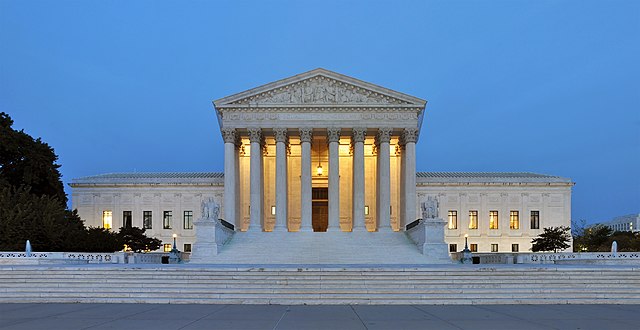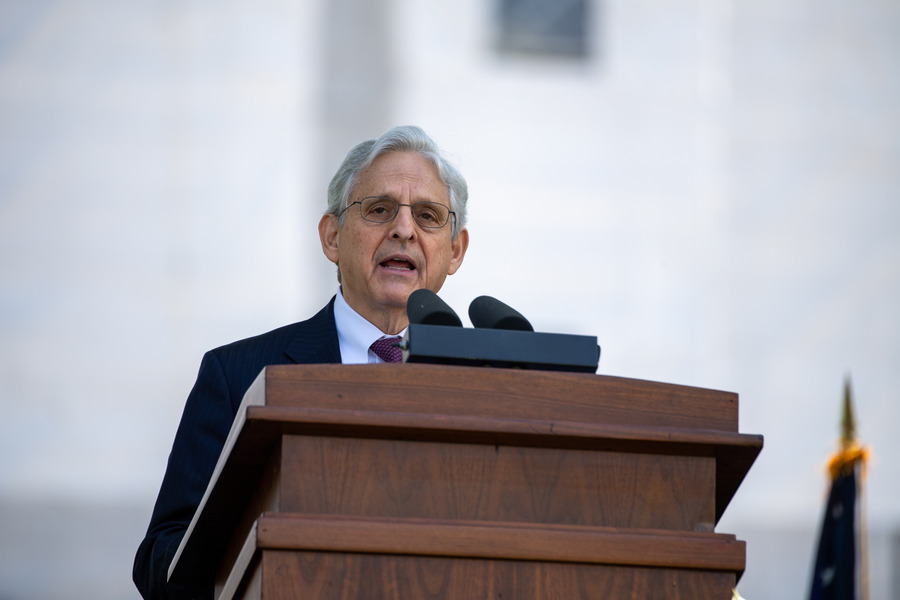Broad Reflections on Trump v. United States

Published by The Lawfare Institute
in Cooperation With

Some issues of constitutional law involve such high stakes and such fundamental trade-offs that they are best left unresolved by courts, if possible, since their resolution requires courts to come down definitively on one side of the trade-off and absorb its potentially awful costs. This conundrum was acute in the Supreme Court’s decision in Trump v. United States about presidential immunity in the prosecution of former President Donald Trump for conspiring to overturn the results of the 2020 election.
Below are a few big-picture reactions to the case; weedier analysis may follow in the days ahead.
The Court faced a slew of novel questions about the scope of presidential power. Many people seem to have a strong opinion about whether the Court’s recognition of fairly broad presidential immunity was “right” or “wrong.” But the standard sources of constitutional law do not permit a definitive answer to that question. And on the ultimate question of whether the Court’s decision was wise, only time will tell.
The case involves a tension at the heart of the U.S. Constitution. Article II vests the president of the United States with the “executive Power” and gives the president a duty to “take Care that the Laws be faithfully executed.” These phrases give the president power to interpret the law for the executive branch, to enforce the law (including prosecutorial decisions), to supervise the running of the government (including firing subordinate executive branch officials), and to direct government policy.
These same phrases—especially the “take Care” Clause—also ensure that the president is not above the law. The great paradox of the American presidency is that the same constitutional provisions that render the president beholden to law also endow the presidency with extraordinary power and discretion to interpret and enforce the law, and thus give an unscrupulous president tools to abuse the law.
The paradox is on palpable display in the Biden administration’s prosecution of former President Trump. The case raises many difficult questions about what it means for the president to carry out the great functions of the office under law, but they can largely be reduced to two. First, did Trump commit crimes in his postelection intrigues? And second, did Special Counsel Jack Smith unduly threaten the presidency when he charged the former president with these crimes?
Neither of these interrelated questions has obvious answers. Smith’s prosecution of Trump for his disgraceful postelection acts is itself entirely novel and untested. The Supreme Court last month in a case against a Jan. 6 defendant called into question one element of Smith’s legal theory against Trump. The remaining elements of the Trump prosecution are also uncertain.
Anyone who thinks the second question is easy should (as I have previously noted) read the brief and oral argument statements by the Office of Special Counsel, which did not think it was easy. The brief recognized that to protect “the President’s ability to carry out his constitutionally assigned functions,” courts could determine whether a “public-authority defense” protects a president against criminal liability, or they could construe criminal statutes “to avoid a serious separation-of-powers concern,” or they could declare that a particular application of a criminal law statute is unconstitutional. At oral argument, the special counsel’s attorney acknowledged (among several other concessions) that it could not prosecute Trump in ways that would “prevent the president from accomplishing his constitutionally assigned functions.”
This is the background to the Supreme Court’s decision, penned by Chief Justice John Roberts. It has three moving parts. First, a president receives no immunity for criminal prosecution for unofficial acts. Second, a president receives absolute immunity from criminal prosecution that would violate the president’s official conduct in exercising an exclusive presidential power, such as issuing a pardon or firing a subordinate. Third, a president receives “presumptive immunity” for other official acts, broadly construed, that can be overcome if the prosecutor shows that prosecution for the act would pose no “dangers of intrusion on the authority and functions of the Executive Branch.”
The first two rulings are not controversial. But the third—a variation of what the special counsel proposed, but one much more protective of the presidency—is quite controversial, and is a large victory for presidential power at the expense of presidential accountability, even though the Court left much for the lower courts to decide in the first instance.
The ruling was neither compelled nor negated by past Supreme Court decisions. Like practically all important separation of powers decisions in this area—including the Nixon tapes case, the case establishing broad presidential immunity from civil actions (Nixon v. Fitzgerald), and the more recent cases involving subpoenas to Trump while in office—the ruling was based on a plausible but not inevitable judgment about the best reading of constitutional text and structure, precedent, history, and, perhaps more than anything else, the Court’s functional assessment of the consequences of the proposed rules.
The functional trade-off before the Court was stark. As Justice Sonia Sotomayor’s dissent emphasized, the decision could give an unscrupulous president wide scope for corrupt behavior. The dissent exaggerates when it says that the Court’s decision makes the president “a king above the law” and “empower[s]” the president “to violate federal criminal law.” The Roberts opinion leaves room for official acts (in addition to all private acts) to be prosecuted, and “the law” includes the proper scope of presidential immunity and the constitutionality of applying criminal statutes to the president in certain circumstances, which are the central questions in the case that cannot be begged. But there is no doubt that the decision enhances presidential power far beyond what was previously settled.
The majority opinion emphasized two different but also quite plausible functional concerns. First, it worried that subjecting a president to prosecution for official acts, especially under the very broadly and vaguely worded statutes that Trump is charged with violating, would massively intrude upon the authority and functions of the president and might chill the president from executing the duties of his office “fearlessly and fairly.” And second, it worried about a prospect that it deemed “more likely” than an out-of-control corrupt president: “an Executive Branch that cannibalizes itself, with each successive President free to prosecute his predecessors.”
There is no way to know which of these visions is right. Both could be, to various degrees, depending on many unknowns about the future, including:
- Will Trump win the November election and carry out his threats to violate the law, and to what degree; and will the nation elect future presidents who share Trump’s attitude toward the presidency?
- To the extent that these events occur, which is worse for the nation: The clarified latitude that the majority’s immunity regime gives irresponsible presidents? Or the chilling of more responsible presidents by the specter of after-office criminal judgment, and the damage to our democracy from tit-for-tat prosecutions of past presidents, that the dissent’s position might invite?
A great deal of the discordant reaction to the Court’s decision—both within and without the Court—turns on assumptions about these and other inscrutable assessments about the future and about the decision’s impact, contingent on possible future events.
The reactions to the decision also turn on different assessments of the political consequences of the Court’s decision. After a late start, Smith has been rushing at a lightning pace, possibly in violation of Justice Department rules, to get the immunity issues resolved and the prosecution of Trump underway before the presidential election. Many Trump antagonists have hoped that yet another preelection airing of the evidence of Trump’s election denial maneuvers, and a possible conviction, would hurt his electoral chances. The Court’s decision now makes a preelection trial practically impossible. The main result of the rush to the Supreme Court is a monumental precedent in support of presidential power.
As I wrote a few months ago, the “idea that the first prosecution of a former president could be done quickly without serious collateral litigation about the impact on the presidency was always a fantasy, even taking into account the ugly abuses of power alleged in the indictment.” And more broadly, it has been a fantasy for many years now to think that courts and prosecutors can purge the nation of a law-defiant populist demagogue. Only politics, not law, can do that.





